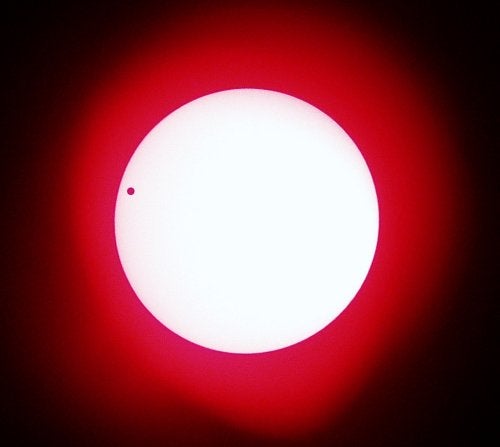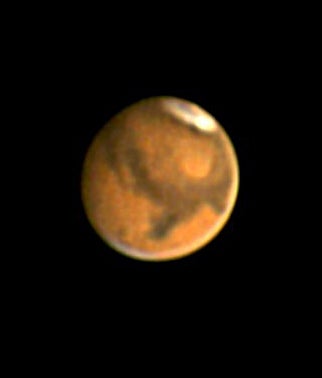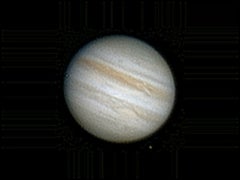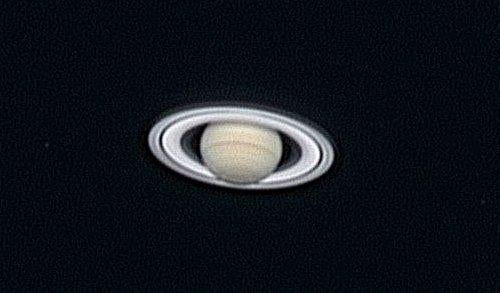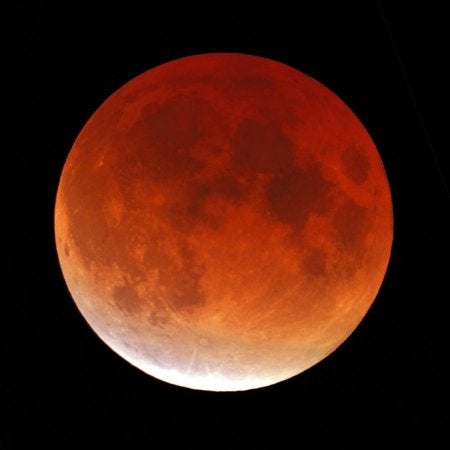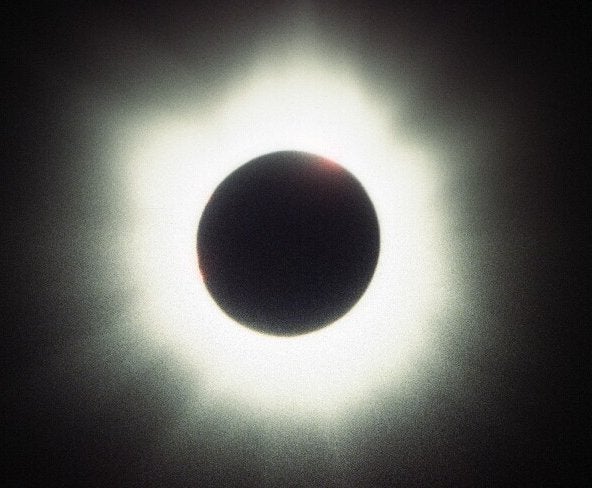Yet a few bright points of light break those rules. Even early civilizations recognized that a handful of celestial objects don’t follow the same pattern but instead move relative to the stars. The ancients called these wandering objects “planets” and, along with the Sun and Moon, regarded them with special significance.
Early civilizations recognized only five planets — Mercury, Venus, Mars, Jupiter, and Saturn — the ones bright enough to show up easily to the naked eye. Astronomers using telescopes discovered three more during the past 225 years: Uranus, Neptune, and Pluto. Together, the planets make up the vast bulk of the material in the solar system outside the Sun.
The eight planets besides Earth fall into two observational classes. The inferior planets — Mercury and Venus — lie between the Sun and Earth, and the superior planets (the other six) lie beyond Earth’s orbit. The two categories show very different observational properties.
With a bigger orbit than Mercury, Venus can appear up to 47° from the Sun. Although it often lies in twilight, Venus occasionally climbs into a completely dark sky. But you don’t need that help to spot it — Venus is by far the brightest object in the sky after the Sun and Moon. It shows up easily except during the fairly brief periods when it passes behind or in front of the Sun.
An inferior planet appears most conspicuous around the time of its greatest elongation from the Sun. If you envision an inferior planet’s orbit relative to Earth’s, the moment when it passes directly between Earth and the Sun is called inferior conjunction. Because an inferior planet moves faster than Earth, it quickly pulls ahead of the Sun in our sky and eventually becomes visible in the east before dawn. It stands highest in the morning sky around the time it reaches greatest western elongation, then it sinks back toward the Sun. The planet then passes on the far side of the Sun from Earth, a configuration known as superior conjunction, before climbing into the western evening sky. It appears highest around greatest eastern elongation and then heads back toward the Sun for its next inferior conjunction. It takes Mercury an average of about 116 days to complete one cycle; Venus requires 584 days.
Observers who own telescopes have to be content with tracking Mercury’s and Venus’s changing sizes and phases. Because Mercury presents such a small disk and turbulence near Earth’s horizon distorts our view, there’s really no hope of discerning any surface feature. And thick, highly reflective clouds permanently shroud the surface of Venus. Neither inferior planet varies much during the relatively long period it spends near superior conjunction. It lies farther from Earth then and so appears smaller, and its gibbous phase changes slowly. At greatest eastern elongation, the planet appears half-lit. The pace of change quickens between this elongation and inferior conjunction. The planet’s size grows rapidly and the phase dwindles precipitously. For Venus, the apparent size grows from roughly 10″ across near superior conjunction to 60″ across at inferior conjunction. The size and phase changes play out in reverse as the planet moves from inferior to superior conjunction.
When viewed through a telescope, Mars shows the biggest changes. (As the closest superior planet, there’s a greater percentage difference between its distance from Earth at opposition and conjunction.) Around the time of opposition, Mars looms quite large and shows intriguing details. In 2003 (its closest approach in nearly 60,000 years), the Red Planet appeared 25″ across. Mars typically spends only a few months at that size during each 26-month apparition, so good views are rather fleeting.
Any telescope also shows four bright dots arrayed on either side of Jupiter’s disk. These are the Galilean moons, discovered by Galileo in 1610, when he first turned his telescope toward the planet. Watch them dance around the planet from one night to the next. Spacecraft revealed the four moons to be worlds in their own right. Innermost Io ranks as the most volcanically active object known. Bright, smooth Europa apparently harbors a vast subsurface ocean of liquid water. Giant Ganymede is the largest moon in the solar system — and bigger than the planets Mercury and Pluto. And outermost Callisto sports the solar system’s most heavily cratered surface.
Saturn also retains a large retinue of moons. Although none appears as bright as Jupiter’s Galilean moons, backyard observers can spot several. Easiest to find is 8th-magnitude Titan, the second largest moon in the solar system and the only one with a substantial atmosphere. A 4- to 6-inch scope reveals 10th-magnitude Tethys, Dione, and Rhea. Oddest of all is Iapetus. When it lies west of Saturn, it glows at 10th magnitude — two magnitudes brighter than when it’s east of the planet.
The outer gas-giant planets — Uranus and Neptune — offer less to backyard observers. Uranus glows at 6th magnitude and can be glimpsed with the naked eye from a dark site. Unfortunately, a telescope doesn’t reveal much detail. Around the time of its opposition, Uranus shows a distinctly blue-green disk that measures a bit less than 4″ across. Neptune glows at 8th magnitude and, through a telescope around opposition, appears blue-gray and slightly more than 2″ across.
Distant Pluto shows absolutely no detail at all. You’ll need an 8-inch telescope and a detailed star chart to have a decent chance of spotting this 14th-magnitude glimmer of light. The reward for spying Pluto comes not from viewing any detail but from the mere accomplishment of locating the plutoid.
Few sky events can rival the majesty of a total lunar eclipse, when the entire Moon plunges through Earth’s umbra. These eclipses start as penumbral ones and progress through partial phases until the Moon lies totally within the umbra. You might think the Moon would disappear during totality because, to the eyes of a hypothetical observer on the Moon, Earth blocks the whole Sun from view. Yet the Moon normally takes on a reddish color. The culprit — Earth’s atmosphere. If Earth were an airless planet, the shadow would be pitch black and the eclipsed Moon would vanish. But our atmosphere acts like a filtered lens, bending red sunlight into the shadow and scattering out blue light. It’s the same reason sunrises and sunsets appear reddish. In fact, the ruddy light hitting the Moon during totality is the glow from all of our planet’s sunrises and sunsets.
Lunar eclipses seem fairly common because they can be seen from the entire nightside of Earth if the weather cooperates. Solar eclipses seem rare in comparison because they produce noticeable effects over a limited geographic area. During a partial solar eclipse, the Moon covers a fraction of the Sun that can range from a nick up to near totality. Because the Sun appears so bright, however, more than half the Sun needs to be blocked before any discernible effect can be seen on the ground. The Sun’s brilliant surface is also why you never should view a partial eclipse directly without a proper solar filter.
But the most spectacular eclipse of all is a total solar one. In this case, the Moon lies close enough to Earth that it blocks the Sun’s entire disk from view. With the brilliant photosphere hidden, you can view totality with the naked eye or optical aid without a solar filter. During totality, the Sun’s faint outer atmosphere — the corona — appears front and center. This gauzy, pearly-white light typically extends two or three times the diameter of the uneclipsed Sun. Also look for fiery prominences, hot tongues of reddish gas that arch above the Sun’s limb and come into view with the photosphere blocked. Total solar eclipses appear so impressive that many observers travel the world to see as many as possible.

